How to Improve Google Rankings: A D2C Marketer's Guide for the AI Era
.png)
As a marketing leader for a direct-to-consumer (D2C) brand in India, you operate in one of the world's most dynamic and competitive markets. Your brand's visibility on Google isn't just a vanity metric; it's a critical driver of growth, customer acquisition, and, ultimately, revenue. The question of "how to improve Google ranking" is a constant in our strategic discussions. But now that AI and Large Language Models (LLMs) are here, the rules for SEO are changing faster than ever before.
In this guide, we'll share a comprehensive framework for D2C brands to not only climb the search rankings but also future-proof their strategy in the age of generative AI search.
How to Rank Higher on Google: A Comprehensive Approach for D2C
Ranking higher on Google is no longer about finding a single silver bullet. It requires a sustained, multifaceted strategy that puts your customer at the center. For D2C & digital brands, this means understanding the unique nuances of your audience – their language, their search behaviour, and the platforms they trust. A successful strategy integrates on-page excellence, off-page authority, flawless technical execution, and compelling content that resonates with the consumers.
Understanding Google’s Ranking Factors in the Age of AI
While Google's core mission remains the same – to provide the most relevant and reliable results – the 'how' is becoming far more sophisticated. With AI Overviews and generative search becoming more prominent, the emphasis on certain factors has intensified.
For D2C brands, key ranking factors for 2025 include:
- Topical Authority and E-E-A-T (Experience, Expertise, Authoritativeness, and Trust): Google wants to see that you are a true expert in your niche. This is demonstrated through comprehensive content, positive customer reviews, and authoritative mentions.
- User Experience (UX) and Page Speed: A slow-loading site is a conversion killer, especially in a mobile-first market. Google’s Core Web Vitals are direct ranking factors, making a seamless and fast user experience non-negotiable.
- High-Quality Backlinks: Links from reputable publications, bloggers, and industry portals are powerful signals of trust and authority.
- Mobile-First Indexing: Your website's mobile version is the primary one Google considers for ranking. A flawless mobile experience is paramount.
- AI-Friendliness: Your content needs to be easily digestible not just by humans, but by AI models. This means clear, concise language, structured data, and directly answering user questions.
Conducting a Strategic Website SEO Audit
Before charting a new course, you need to know your current position. An SEO audit is your diagnostic tool. For a D2C brand, this should focus on:
- Technical Health: Can Google easily find and understand your product and category pages? Are there crawl errors or indexing issues?
- On-Page SEO: Are your product titles, descriptions, and images optimized for the keywords your customers are using?
- Content Gap Analysis: What are your competitors ranking for that you aren’t? What questions are consumers asking that your content doesn't answer?
- Backlink Profile Review: Are your backlinks from high-quality, relevant sources?
Keyword Research: The Foundation of Your D2C SEO Strategy
Keyword research is about understanding the voice of your customer. In the AI era, this goes beyond simple keywords to understanding intent and context.
- Embrace Long-Tail and Conversational Keywords: Think about how your customers would ask a question to a voice assistant or in a search bar. For example, instead of just "running shoes," target "best running shoes for marathon training in <city name>."
- Understand Vernacular and Regional Nuances: Example, India is a land of diverse languages. Consider incorporating Hinglish and other regional language keywords where relevant to your target audience.
- Analyse Search Intent: Is the user looking for information (e.g., "benefits of a silk pillowcase"), to compare products ("Puma vs. Nike"), or to buy now ("buy onion hair oil online")? Your content must match this intent.
On-Page SEO Optimization for D2C Success
On-page SEO makes it clear to both users and search engines what your pages are about. For D2C brands, this is critical for product and category pages.
- Compelling Product Titles and Meta Descriptions: These are your digital storefront window. They should be enticing and include your primary keywords and unique selling propositions (e.g., "Free Shipping," "Cash on Delivery").
- Optimized Product Images: Use high-quality images with descriptive alt text. This helps with image search rankings, a significant traffic source for D2C.
- User-Generated Content: Integrate customer reviews and ratings on your product pages. This builds trust and provides fresh, keyword-rich content.
- Schema Markup: Implement product schema to give Google detailed information about your products, such as price, availability, and review ratings, which can then be displayed as rich snippets in the search results.
Content is King: Building Trust and Authority
In the age of AI, where information is abundant, your content must be exceptional. For D2C brands, content is your opportunity to build a community and a brand story, not just sell a product.
- Create Value-Driven Content: Develop blog posts, how-to guides, and videos that solve your customers' problems. If you sell skincare, create content around "building a skincare routine for oily skin."
- Focus on Originality and Expertise: Showcase your brand's unique perspective and the expertise behind your products. Avoid generic, AI-written content that doesn't provide real value.
- Leverage Video and Visuals: Digital consumers have a huge appetite for video content. Product tutorials, behind-the-scenes footage, and influencer collaborations can drive significant engagement and build brand affinity.
Technical SEO: The Unseen Engine of Growth
The technical health of your site serves as the launchpad for all your other SEO initiatives, from content to link building. A technically flawed website will struggle to rank, no matter how brilliant your content.
- Prioritise Site Speed: A fast-loading website is crucial for retaining users and ranking well. Boost your site's loading speed through two main actions: optimizing assets like images and code, and implementing caching to help browsers store and retrieve your site faster.
- A Clean and Logical Site Structure: Organize your site into a clear structure of categories and subcategories to help both users and search engines navigate and understand your content easily.
- Make Your JavaScript Search-Engine Friendly: Many modern D2C websites rely on JavaScript to create a dynamic and interactive user experience. However, this can make your most important content invisible to search engine crawlers. This is precisely the challenge N7 Search Engine Rank Accelerator (SERA) solves. Our service renders your dynamic JavaScript pages into static HTML, ensuring that search engine bots can see the full, final content of your site, just as a user would. This step is crucial for ensuring all your valuable product information is properly indexed and ranked.
Off-Page SEO and Link Building in the D2C Context
Off-page SEO refers to all activities performed outside your site—like earning backlinks and social media mentions—to strengthen its credibility and trust.
- Strategic Digital PR: Get your brand featured in leading online publications, lifestyle blogs, and news outlets.
- Collaborate with Influencers: Partner with relevant influencers who can create authentic content and link back to your website.
- Build Relationships, Not Just Links: Shift your focus from merely acquiring links to fostering genuine connections within your community on social media and other relevant platforms; authentic relationships are the true source of authority.
Using Analytics to Track and Refine Your Strategy
Data is your most valuable asset. Use analytics to understand what's working and where you can improve.
- Google Search Console: Gain direct insights from Google, allowing you to analyze your site's search performance, check keyword positions, and diagnose technical errors.
- Google Analytics 4: Gain deep insights into how users are interacting with your website, track conversions, and understand the customer journey.
Common SEO Mistakes D2C Brands Should Avoid
At N7 SERA, we see D2C brands commit one huge mistake all the time: forgetting the technical side of SEO. Brands build stunning JavaScript sites assuming Google sees what users see, but often, the content is invisible to crawlers. This makes all other SEO efforts worthless.
Beyond this, avoid keyword stuffing; write for customers, not machines. Keep content fresh to maintain authority, as stale information signals irrelevance. To maintain and grow your rankings, you must adopt a mindset of continuous improvement, constantly monitoring performance and adjusting your strategy to stay ahead.
By using this comprehensive approach, your D2C brand can rank higher on Google and build a strong online presence that lasts in the fast-changing D2C market.
Frequently Asked Questions (FAQs)
How do I increase my Google search ranking?
Increasing your ranking requires a complete strategy. For a D2C brand, this means focusing on four key pillars:
- Flawless Technical SEO: Ensure Google can perfectly see and index all your product pages.
- High-Quality Content: Create product descriptions and guides that are better than your competitors'.
- Superior User Experience: Deliver a fast, mobile-friendly shopping experience.
- Strong Authority: Earn high-quality backlinks that signal trust to Google.
How do you rank #1 on Google?
Ranking #1 means Google has determined your page is the single best, most definitive answer for a specific search. This isn't about a trick; it's about earning it. Your page must offer superior content, a faster and better user experience, and be supported by stronger authority signals (like reviews and backlinks) than any other result. For D2C, this often means being the most trusted and helpful resource for that product or category.
How can I rank faster in Google?
While SEO is a long-term strategy, the fastest way to improve rankings is to remove technical roadblocks. Ensure your website is perfectly crawlable and renders instantly for search engines—this is often the biggest bottleneck for modern D2C sites. Targeting long-tail keywords with clear buying intent can also yield quicker wins than competing for broad, highly competitive terms.
Why is my Google ranking so low?
Low rankings typically stem from one of four areas:
- Technical Issues: Google may not be able to properly crawl or render your JavaScript-heavy site, making your content invisible.
- Content Mismatch: Your page content doesn't satisfy what the user is actually searching for.
- Poor User Experience: Your site is slow, especially on mobile, or difficult to navigate.
- Lack of Authority: You don't have enough quality backlinks from reputable sites to build trust with Google.

.png)
.png)
.png)
